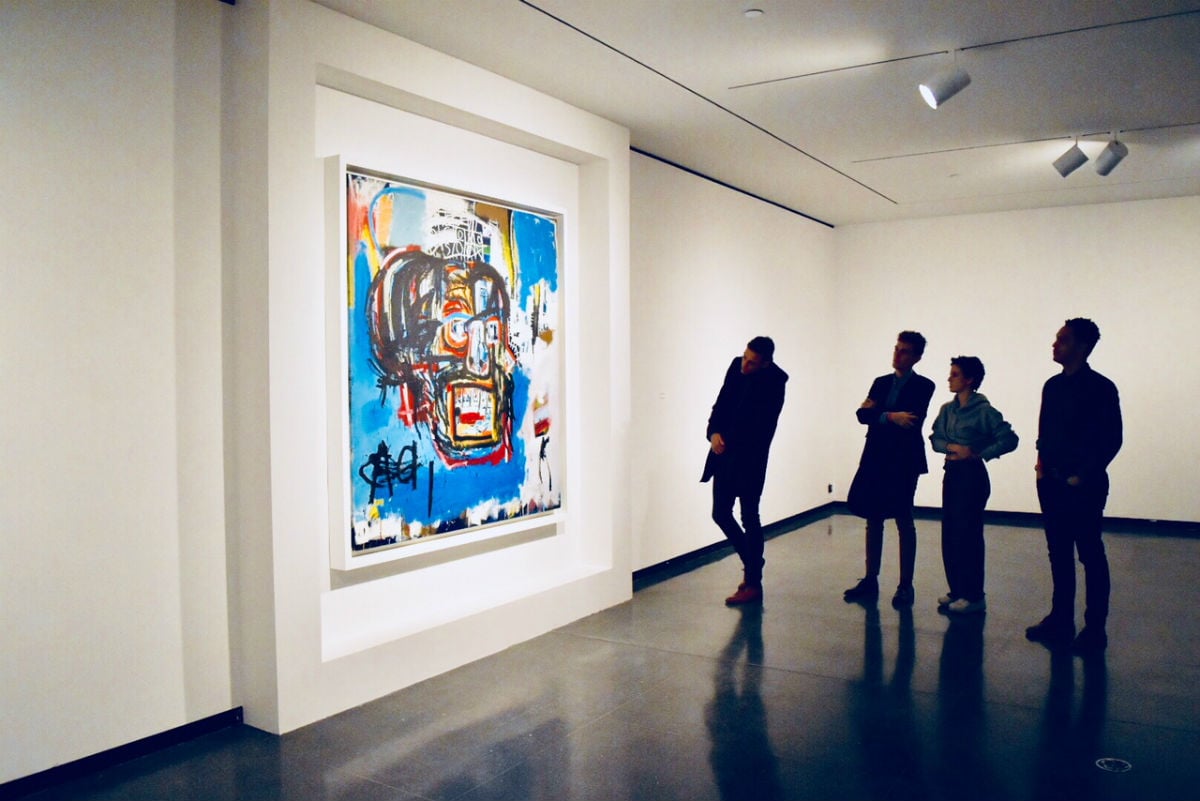
Art authentication is not for the faint of heart.
Not long after Untitled (Skull), the finest Basquiat painting ever to come to auction, sold for an incredible $110.5 million last year, our art authentication service was hired by an international dealer. He explained that he was in the process of selling a Basquiat painting, and had a buyer lined up who was ready to pay millions for it—assuming it passed muster.
The client was friendly and professional. He furnished us with digital photos of his painting and a detailed history of its ownership, signed our standard legal disclaimer, and dutifully sent payment. As an added inducement, he let it be known that he owned a number of additional Basquiats and was eager to hire us to authenticate them as well.
After receiving images of the work, I conducted my research and concluded that the painting was not, in fact, genuine. After I delivered the disappointing news to the client, his demeanor quickly changed.
Once he realized I would not reconsider my position, there were threats of lawsuits—and worse. It was the “worse” that concerned me. The experience made me wonder to what length a collector would go to have his picture validated. This sort of bad behavior is not unheard of; the world of Modigliani authentication is allegedly filled with similar issues.
In the wake of the $110 million Basquiat sale, we’ve experienced a steady flow of inquiries—and encountered a growing number of questionable works purportedly by the American master. A surprising number of inquiries have come from owners who claim to have multiple Basquiats. (The record is 21.)
Collector Yusaku Maezawa with his record-setting purchase: Basquiat’s Untitled (1982). Courtesy of @yusaku2020.
We usually suggest that clients hire us to authenticate a single painting and see how it goes. There’s a rule of thumb in the art authentication business when a group of paintings all come from the same source: “If one’s real, they’re all real.” The converse is also true.
In examining a growing number of purported Basquiats, five patterns have emerged. Any one of them will prompt us to think twice about the object under consideration.
1. They often include a depiction of a gold crown. Forgers seem to have seized upon Basquiat’s well-known motif and assumed that by placing it somewhere within the composition, an alchemical process occurs and—voila!—you have a genuine Basquiat. While not all crowns depicted in bona fide Basquiats are painted a yellow-gold, for some reason, they usually are in fakes.
2. They are often boldly signed on the front of the canvas. In fact, these signatures usually become a dominant compositional element—but Basquiat never signed his works on the front. Then there are those works signed on the verso with a crown above the initials “JMB.” In general, many Basquiats are unsigned—but fakes always bear a signature.
3. They are often painted on found objects. Most people are aware that Basquiat worked on a multiplicity of objects and surfaces, ranging from doors to football helmets. Artists who manufacture “Basquiats” use this knowledge to their advantage. One of the better forgeries we saw was painted on a mannequin. The artist was even thoughtful enough to cover its ears with graffiti-strewn headphones.
4. They often contain references to drugs. Despite Basquiat’s heroin habit, he rarely included words that referenced narcotics. One might assume that his drug indulgences were perhaps not something he was proud of—especially after being constantly lectured on the matter by his mentor Andy Warhol.
5. They often come with an amazing backstory. Inevitably, these stories revolve around the original owner acquiring the work directly from Basquiat. To increase the story’s street cred, the current owner will insist that the original buyer traded Basquiat drugs in exchange for the work. (There is also a common variation on that theme, which is that Basquiat was selling his work directly to buyers because he needed the money to buy drugs.) Naturally, because these deals flew under the radar, no invoices or paperwork exist.
These origin stories can become quite elaborate. One of my favorites centers on a portfolio of early works purportedly by Basquiat. The owner explained that he had once shared a subway ride with the artist, who was carrying a black cardboard portfolio crammed with early postcard drawings. When Basquiat exited the train, he forgot to take the portfolio. The man on the train retrieved it and called Basquiat that night to return it. But despite his persistence, he claimed, Basquiat was either too busy or too stoned to deal with it. According to the story, the man kept everything—and, decades later, suddenly decided the time was right to make the work available.
In the short term, the sale of the $110 million Basquiat made the buyer, the Japanese collector Yusaku Maezawa, a household name in the art world. He ultimately lent the work to the Brooklyn Museum, where it is the subject of a one-work exhibition called “One Basquiat” (through March 11). But the sale also led many Basquiat owners to believe that their paintings were worth far more than they actually are—and it encouraged bad actors to come out of the woodwork.
Inevitably, all of the hype surrounding the sale will dissipate. But until that happens, a steady flow of fake Basquiats will keep popping up like varmints in a game of Whack-a-Mole. And just like those plastic moles, most of these paintings won’t be real, either.
Richard Polsky is the owner of Richard Polsky Art Authentication, which specializes in the work of Andy Warhol, Jean-Michel Basquiat, and Keith Haring.